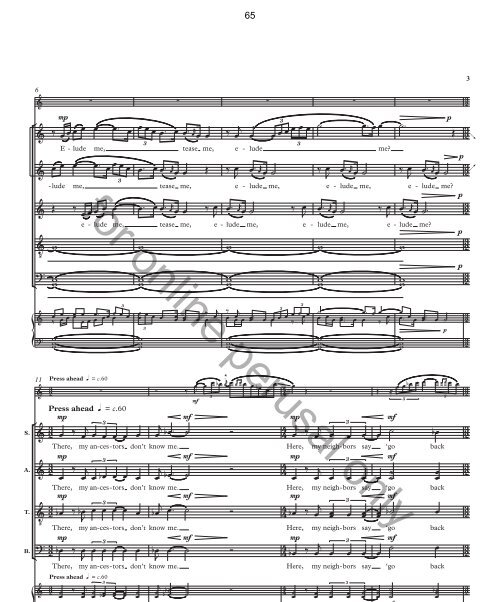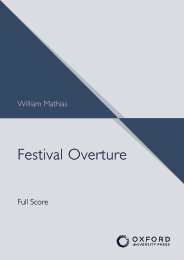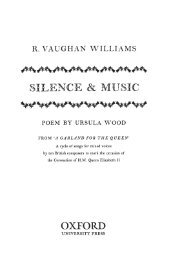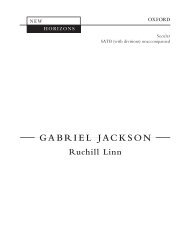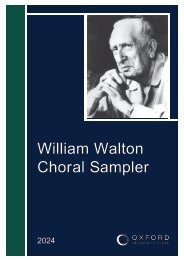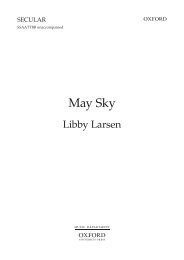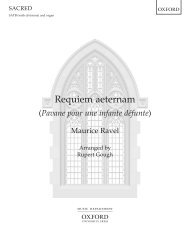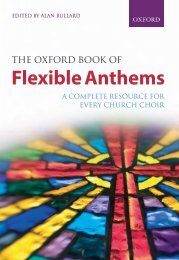Reena Esmail Choral Sampler
Reena Esmail works between the worlds of Indian and Western classical music, to bring communities together through the creation of equitable musical spaces. Esmail holds degrees from The Juilliard School and the Yale School of Music, and has written for Kronos Quartet, Albany Symphony and Conspirare. A resident of Los Angeles, Esmail is the 20-23 Swan Family Artist in Residence with Los Angeles Master Chorale, and the 20-21 Composer in Residence with Seattle Symphony. She is the Artistic Director of Shastra, a non-profit organization that promotes cross-cultural music connecting musical traditions of India and the West.
Reena Esmail works between the worlds of Indian and Western classical music, to bring communities together through the creation of equitable musical spaces. Esmail holds degrees from The Juilliard School and the Yale School of Music, and has written for Kronos Quartet, Albany Symphony and Conspirare. A resident of Los Angeles, Esmail is the 20-23 Swan Family Artist in Residence with Los Angeles Master Chorale, and the 20-21 Composer in Residence with Seattle Symphony. She is the Artistic Director of Shastra, a non-profit organization that promotes cross-cultural music connecting musical traditions of India and the West.
Create successful ePaper yourself
Turn your PDF publications into a flip-book with our unique Google optimized e-Paper software.
3<br />
<br />
<br />
<br />
<br />
<br />
<br />
<br />
<br />
<br />
<br />
<br />
<br />
for online perusal only<br />
<br />
<br />
<br />
<br />
<br />
<br />
<br />
<br />
<br />
<br />
<br />
<br />
<br />
<br />
<br />
<br />
<br />
<br />
<br />
<br />
<br />
<br />
<br />
<br />
<br />
<br />
<br />
<br />
<br />
<br />
<br />
<br />
<br />
<br />
<br />
<br />
<br />
<br />
<br />
<br />
<br />
<br />
<br />
<br />
<br />
<br />
<br />
<br />
<br />
<br />
<br />
<br />
<br />
<br />
<br />
<br />
<br />
<br />
<br />
<br />
<br />
<br />
<br />
<br />
<br />
<br />
<br />
<br />
<br />
<br />
<br />
<br />
<br />
<br />
<br />
<br />
<br />
<br />
<br />
<br />
<br />
<br />
<br />
<br />
<br />
<br />
<br />
<br />
<br />
<br />
<br />
<br />
<br />
<br />
<br />
<br />
<br />
<br />
<br />
<br />
<br />
<br />
<br />
<br />
<br />
<br />
<br />
<br />
<br />
<br />
<br />
<br />
<br />
<br />
<br />
<br />
<br />
<br />
<br />
<br />
<br />
<br />
<br />
<br />
<br />
<br />
<br />
<br />
<br />
<br />
<br />
<br />
<br />
<br />
<br />
<br />
<br />
<br />
<br />
<br />
<br />
<br />
<br />
<br />
<br />
<br />
<br />
<br />
<br />
<br />
<br />
<br />
<br />
<br />
<br />
<br />
<br />
<br />
<br />
<br />
<br />
<br />
<br />
<br />
<br />
<br />
<br />
<br />
<br />
<br />
<br />
<br />
<br />
* Grace notes with lines through should be played before the beat. Those without lines through and with tenuto marks should be played on the beat.<br />
Fanned beams indicate a gradual speeding up through the beamed group.<br />
Lines between notes denote smooth slides rather than chromatic glissandi.


